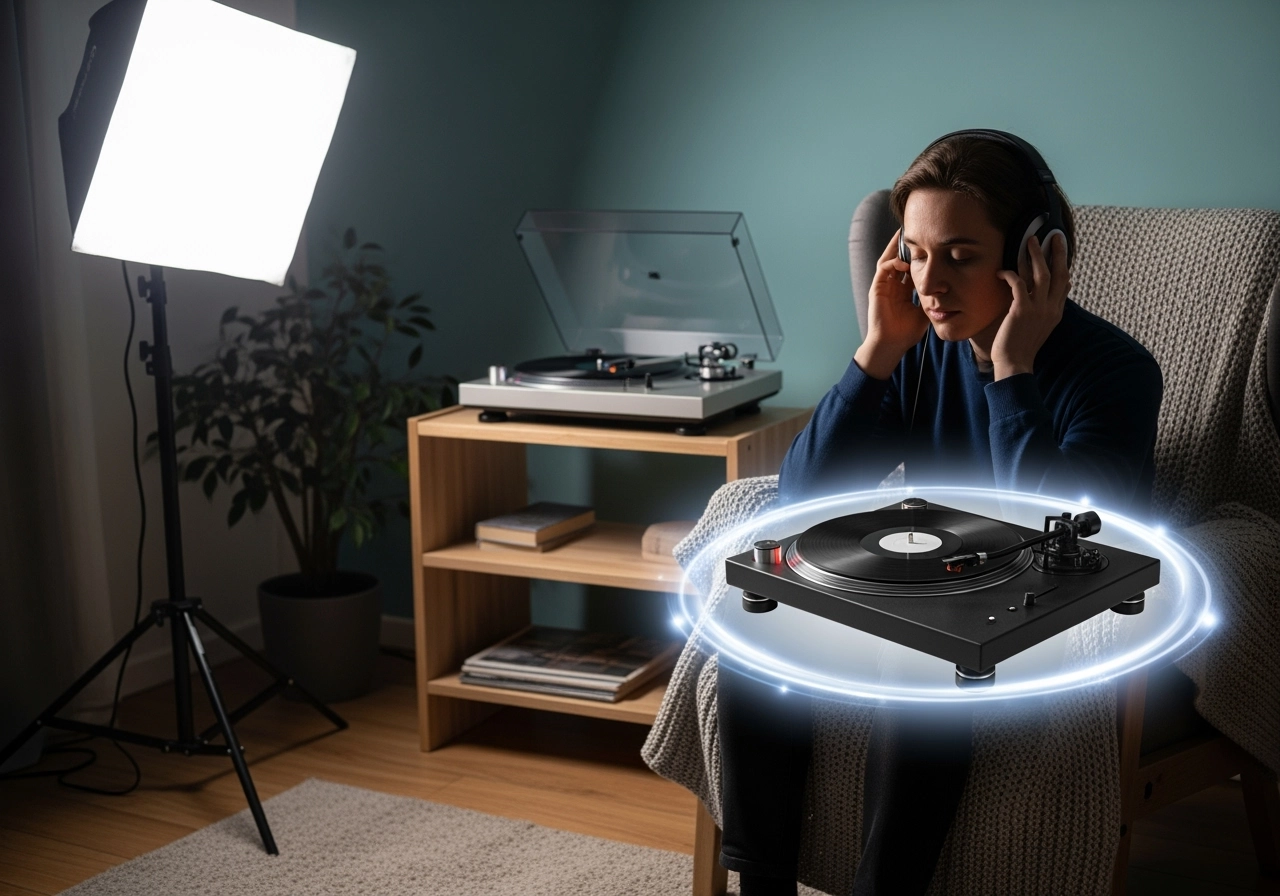How to A/B Test Your Audio Isolation at Home
You’ve read about the benefits of audio isolation, but how can you verify the improvements for yourself? The most effective way to evaluate the impact of an isolation accessory is through a simple, repeatable A/B test. This method involves listening to a specific piece of music with your current setup (“A”), then making a single change—like adding an isolation mat or feet—and listening again (“B”). By following a few key steps, you can eliminate variables and get a clear sense of the sonic difference.
Step 1: Choose Your Music Carefully
The first and most critical step is selecting the right track. You need a song that you know intimately and that contains specific sonic elements that are often masked by resonance.
- Complex Passages: Choose a track with a dense mix. Look for sections with multiple instruments playing at once, particularly in the lower frequencies (e.g., a bass line and a kick drum together).
- Acoustic Instruments: Listen for tracks with natural-sounding acoustic instruments, such as a piano, acoustic guitar, or a double bass. Pay close attention to the decay of the notes.
- Subtle Details: Find music with low-level details. This could be the quiet tapping of a cymbal, the sound of a musician’s fingers on a fretboard, or the subtle reverb of a vocalist’s breath in a quiet moment.
Step 2: Establish a Baseline (Your “A” Test)
Before you change anything, perform your “A” test. Listen to your chosen track multiple times. This is your control group.
- Warm-up: Allow your system to warm up for 15-20 minutes to reach its optimal operating temperature.
- Listen Critically: Pay attention to the specific details you identified in Step 1. Try to memorize how the bass drum sounds, how separated the instruments are, and how the vocals sit in the mix.
- Take Notes: Writing down your observations will help you remember what you heard. Note things like “bass a little muddy,” or “piano notes sound a bit flat.”
Step 3: Introduce the Isolation Accessory (Your “B” Test)
Now, it’s time to introduce the isolation accessory.
- Power Down: Turn off your equipment.
- Install: Place the isolation mat under your turntable platter or position the isolation feet under your DAC or CD player. Ensure the component is level and stable.
- Power Up: Turn your system back on and let it warm up again.
Step 4: The Listening Test (Your “B” Test)
Listen to the exact same track you chose for your “A” test.
- Immediate Re-Listen: It’s best to perform the A/B comparison back-to-back while your auditory memory is fresh.
- Focus on Key Areas: Return to the specific complex passages and subtle details you noted earlier. Is the bass tighter? Can you hear the decay of the piano notes more clearly? Is the soundstage wider or more three-dimensional?
- Note the Differences: Write down your new observations. Look for key improvements, such as “bass has more texture,” “cymbals have a longer, more natural shimmer,” or “vocals are more forward and clear.”
Q&A Section
Q: What is “A/B testing” in audio? A: A/B testing in audio is a method of direct comparison. You listen to a component or system in its current state (A), and then you listen to it again after making a single change (B), such as adding an isolation device, to determine if there is an audible difference.
Q: Can I really hear a difference with my digital gear? A: Yes. While the effects are often more subtle than with a turntable, many audiophiles report a noticeable improvement. The isolation helps to reduce digital jitter and electronic noise, which can manifest as a “grainy” or “flat” sound. Isolation often makes the sound clearer, with a more stable and focused image.
Q: What if I don’t hear a difference right away? A: This is common. The improvements from isolation are often about the removal of “bad sound” rather than the addition of “good sound.” It may take a few back-and-forth listens to train your ear to the more subtle changes. Over time, you may find that the music is simply more listenable and fatigue-free.
